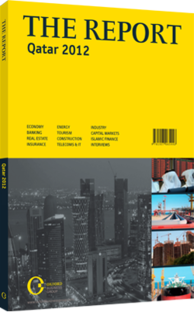Doha Bank: Banking
THE COMPANY: Doha Bank (DHBK on the Qatar Exchange) is the country’s fifth-largest bank, with a 7.5% market share based on 2011 assets. The lender offers conventional banking services and provides credit card, foreign exchange and asset management services. DHBK has a presence in Qatar, Kuwait and the UAE. The bank also has representative offices in Japan, China, Singapore, South Korea, Turkey, the UK and Germany. DHBK’s operations include several subsidiary and associate companies. Doha Bank Assurance Company (100% owned) provides all lines of general insurance to corporate clients. Dbank Tech (100%) offers technology services and is incorporated in the UAE. Doha Brokerage and Financial Services (44%) is based in India, offering brokerage services, wealth management and investment solutions. DHBK reported net profits of QR350m ($96.1m) for the second quarter of 2012, down 10.2% quarter-on-quarter (q-o-q) from QR390m ($107.1m) in the first quarter. Interest income and income from Islamic financing activities amounted to QR554.4m ($152.2m) in the second quarter, a decline of 1.1% year-on-year (y-o-y). Interest expense and unrestricted investment depositors’ share of profit was QR144.3m ($39.6m), up 15.2% y-o-y. This combination of lower income and higher expense resulted in net interest income and income from Islamic financing activities declining by 5.8% y-oy to QR410.1m ($112.6m) for the second quarter of 2012. Net income from insurance activities was QR3.9m ($1.1m), down 37.3% y-o-y. However, net income from financial investments amounted to QR77.3m ($21.2m), up 441.8% y-o-y. Investment in financial instruments increased to QR8.7bn ($2.4bn), up from QR7.9bn ($2.2bn) at the end of the first quarter. The loan-to-deposit ratio increased to 97.8% in the second quarter of 2012, a rise from 94.2% at the end of the first quarter. The loan book improved by only 0.4% q-o-q, but deposits declined by 3.3% over this same period. On a year-to-date basis, the loan book declined by 3.4% and deposits were also down by 4.3%. Going forward, we feel that investors would like to see improvement from operations, which has been absent in the first half of 2012 for DHBK. However, credit to the private sector is showing signs of recovery, and we expect DHBK to benefit from this trend.
In 2011 net profit rose by QR186.9m ($51.3m), a 17.7% y-o-y increase over 2010. The primary driver for the improved performance was the QR439m ($120.5m) decline in interest expense, which more than offset the QR224.8m ($61.7m) drop in interest income, resulting in growth in net interest income of 15.9% y-o-y. Net fees and income fell by 3.2% y-o-y, while net income from insurance activities declined by 1.6% over the same period. Income from Islamic financing and investing income improved by QR24.8m ($6.8m) y-o-y. In sum, net operating income improved by QR238.4m ($65.5m) in 2011, equal to a rise of 11.4% over the prior year.
The bank paid a dividend of QR4.5 ($1.24) per share in 2011 versus QR5 ($1.37) in 2010. Total assets grew by 11% y-o-y to QR52.4bn ($14.4bn) in that same year. The growth was primarily driven by an 179.2% y-o-y increase in lending to banks and other financial institutions and by a 15.7% y-o-y rise in loans and advances to customers. The growth in assets was funded by QR3bn ($823.8m) in borrowing from other financial institutions, by QR1.0bn ($274.6m) in total shareholder equity and by QR876.9m ($240.8m) from customer deposits, including unrestricted investment depositors’ account. Financial investments rose by 45.2% y-o-y to QR7.6bn ($2.1bn). The loan-to-deposit ratio stood at 98.8% at end-2011 versus 91.7% for the prior year.
DEVELOPMENT STRATEGY: DHBK is the retail bank of Qatar. It aims to build its strong consumer reach to become the leading supplier of innovative consumer banking solutions. Key opportunities include market share growth in public sector volumes, corporate and high-net-worth lending, and geographical diversification and product innovation. Increased competition could have an impact on profits, and its exposure to the retail segment could be a concern for investors.
You have reached the limit of premium articles you can view for free.
Choose from the options below to purchase print or digital editions of our Reports. You can also purchase a website subscription giving you unlimited access to all of our Reports online for 12 months.
If you have already purchased this Report or have a website subscription, please login to continue.

